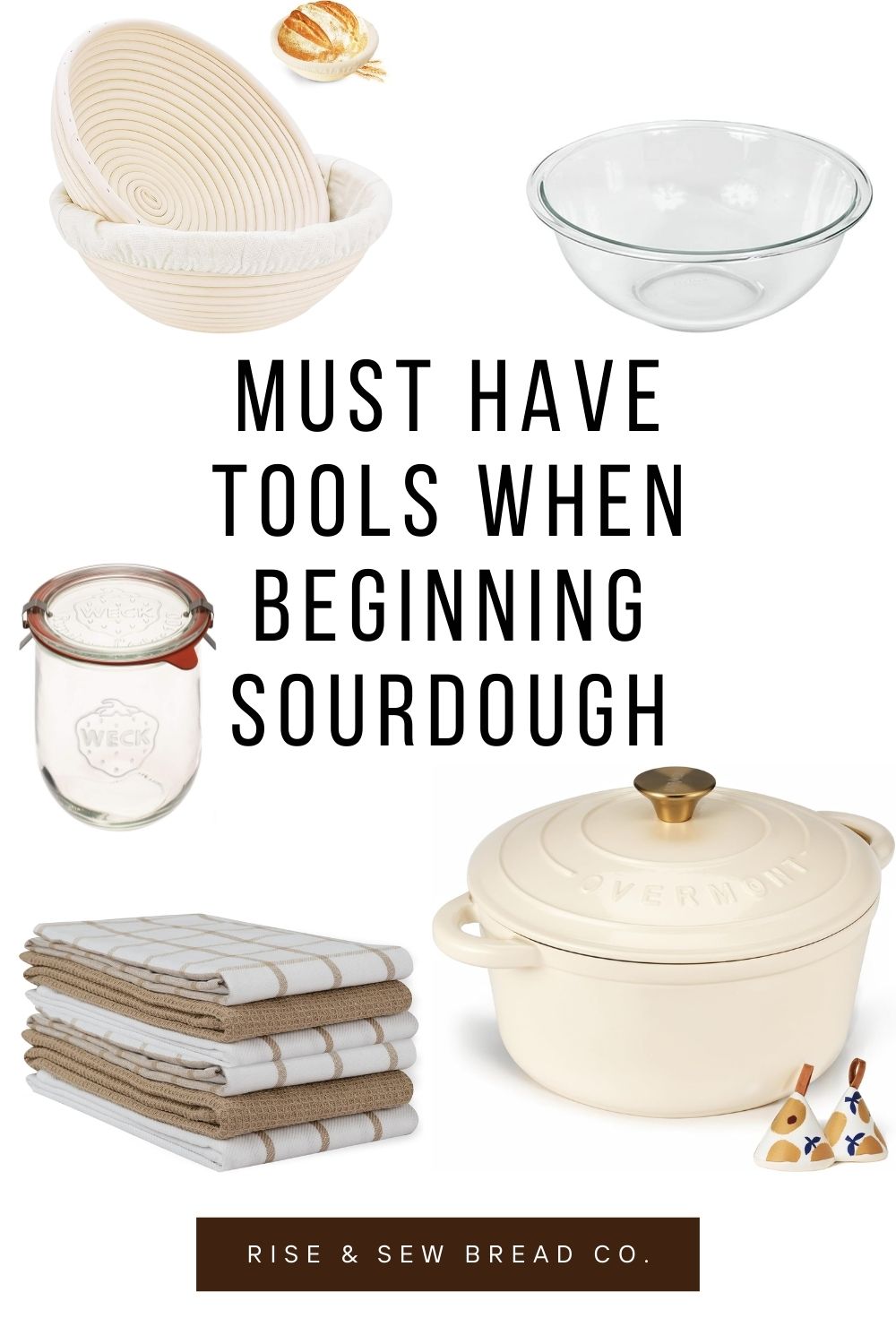Starting a sourdough journey can be both exciting and rewarding. While it’s true that sourdough baking doesn’t require a lot of fancy equipment, having the right tools can make the process easier and more enjoyable. Whether you’re a complete beginner or looking to upgrade your current setup, here’s a list of essential tools every sourdough baker needs.
note: all links are affiliate links to support me and are at no extra charge to you!
1. Mixing Bowls
A set of mixing bowls is a must-have for any sourdough baker. You’ll need a large bowl for mixing your dough and a smaller one for your starter. It’s important to have bowls that are big enough to accommodate the dough as it rises and expands. My personal favorite are these Pyrex bowls. I have this set and a 4 qt bowl as well that I am using for every single recipe!
Tip: Choose non-reactive materials like glass or stainless steel, which won’t affect the fermentation process.
2. Kitchen Scale
Precision is key in sourdough baking. A kitchen scale allows you to measure ingredients by weight, which is far more accurate than measuring by volume. This ensures consistency in your dough and gives you better results.
Tip: A digital scale with a tare function is ideal, as it allows you to zero out the weight of your bowl or container.
3. Sourdough Starter Jar
Your sourdough starter is the heart of your bread, so a dedicated jar or container is essential for maintaining and feeding it. Choose a jar with enough space for the starter to expand as it ferments. It’s also helpful to have a transparent container to easily monitor its growth.
There are a variety of jars out there that you can use, I’ve used a wide mouth mason jar (large and small) and a large cookie jar.
Tip: Use a glass jar with markings or a rubber band to track the starter’s growth over time.
4 Dough Scraper
A dough scraper (or bench scraper) is essential for handling sticky dough and dividing it into portions. It’s also helpful for scraping dough off the counter and lifting your loaves into the oven. This tool is a must for keeping your workspace tidy and your dough manageable.
Tip: Invest in a sturdy, stainless steel scraper for easy cleaning and durability.
5. Proofing Basket (Banneton)
A proofing basket, also known as a banneton, helps give your sourdough loaf its distinctive round or oval shape. The rattan or linen-lined baskets allow the dough to rise while holding its shape. They also promote a crispy, well-defined crust.
Tip: Dust the inside of the banneton with flour before placing your dough to prevent sticking.
6. Dutch Oven
For a perfect crust, you need a baking vessel that retains heat and moisture. A Dutch oven is ideal for sourdough, as it mimics the conditions of a traditional brick oven. The enclosed space traps steam, helping your bread rise and develop a golden, crispy crust.
Tip: Preheat your Dutch oven before baking to ensure even heat distribution.
7. Lame (Slicing Blade)
A lame is a razor-sharp blade used for scoring or slashing the top of your sourdough before baking. Scoring helps the bread expand as it bakes, creating an appealing pattern and preventing the dough from tearing unpredictably.
Tip: Practice scoring your loaves with a gentle, confident hand. The sharper the blade, the better the result!
8. Thermometer
A thermometer is a great tool for checking the internal temperature of your bread. For perfectly baked sourdough, you want the internal temperature to be between 200°F and 210°F (93°C–99°C). This ensures that the bread is fully cooked without being underdone or overdone.
Tip: A digital instant-read thermometer provides quick and accurate readings.
9. Tea Towels or Linen Cloths
Covering your dough during the rise is important to maintain a warm, humid environment. Tea towels or linen cloths work great for this purpose, as they allow the dough to breathe while preventing it from drying out.
Tip: Avoid using terry cloth towels, as they can leave lint on your dough.
10. Spray Bottle
A spray bottle filled with water can be used to mist your dough during its final rise or to create steam in your oven. Steam helps the bread expand in the oven and results in a crisp, crackling crust.
Tip: Keep the spray bottle filled with clean, filtered water to prevent any buildup of minerals.
Conclusion
With these essential tools in hand, you’re ready to start your sourdough baking journey! Remember that while tools can certainly make the process easier, practice and patience are key to achieving the perfect loaf. So, gather your equipment, get your hands dirty, and enjoy the process of creating delicious, homemade sourdough bread.
There are so many other tools you can use when baking sourdough to make your life easier, but I believe when just beginning these are the ones that are the most necessary!
Have any questions about sourdough tools or need recommendations for a specific item? Feel free to leave a comment below! Happy baking!
